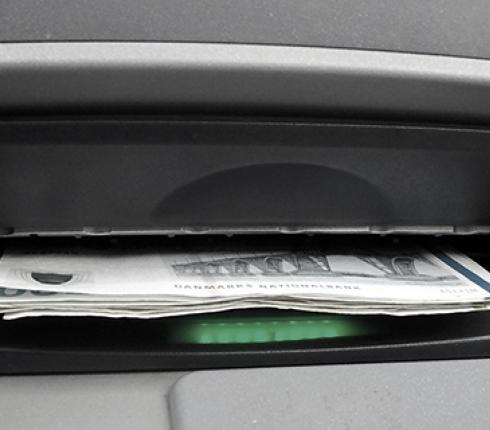Proposal for a regulation on crypto-asset markets – "tokens", "cryptocurrency", and MiFID II–Part 2
This update sheds light on the proposal’s main contents and the amendments that the proposal will bring to MiFID II if adopted.

The three tokens
The Regulation shall apply to crypto-assets except for crypto-assets which are considered as:
- financial instruments under MiFID II
- e-money under EMD
- deposited funds under DGSD
- structured deposits under MiFID II
- securitisation under the STS Regulation
Crypto-assets generally cover a digital representation of value or rights that can be transferred and stored electronically via DLT or similar technology (blockchain). This broad definition considers all types of crypto-assets that are not currently covered by EU financial services legislation so that legislation can keep up with innovation and technological developments.
There are many different kinds of crypto assets, and more are to be expected over time. Each crypto-asset must be assessed independently to clarify its regulatory status. In particular, it is necessary to assess whether the crypto asset is subject to the existing financial regulation, including whether the crypto-asset constitutes a financial instrument.
The broad definition also makes it necessary to distinguish between specific subcategories of crypto-assets that should be subject to specific requirements.
In this context, the proposal distinguishes between 1) "utility tokens", 2) "asset-referenced tokens", 3) "e-money tokens", and 4) other crypto assets. Each type of crypto asset is subject to special rules.
Utility tokens
Utility tokens are intended to provide digital access to goods or services available in connection with DLT and acceptable only to the issuer of that token. Such tokens have non-financial purposes connected with, for example, the operation of a digital platform or service and should be considered a specific type of crypto-assets. Their value is not linked to other underlying assets or instruments and cannot be re-deemed anywhere other than with the issuer. Such tokens are usually used to pay fees on the crypto-asset service.
Asset-referenced tokens
Asset-referenced tokens purport to maintain a stable value by referring to several (fiat) currencies that are legal tender, one or several commodities, or one or more crypto-assets or a combination of such un-derlying assets. By stabilising their value, they can be used by the holders as a means of payment to pur-chase goods and services and as a means of store of value. Under the proposal for Markets in Crypto as-sets (MiCAD), issuers of asset-based tokens shall either be a credit institution or have a special authorisa-tion to offer asset-based tokens to the public and to apply for admission to trading on a trading platform for crypto assets.
E-money tokens
E-money tokens, as the name suggests, are primarily intended as a means of payment and aim to stabilise their value by referring only to one fiat currency. These crypto-assets are very comparable to e-money and constitute surrogates for coins and notes that can be used for payments. Under the proposal, issuers of e-money tokens must be authorised as a credit institution or e-bank to offer electronic tokens to the public and to be used for trading on a trading platform for crypto-assets.
Other crypto assets
Other crypto assets are the catch-all provision covering all crypto assets other than those mentioned and those specifically exempted from the Regulation. The Regulation divides them into a separate section entitled " Crypto-Assets, other than asset-referenced tokens or e-money tokens ". Under the Regulation, no crypto-asset issuer may offer them to the public or request the admission of such crypto-assets to trading on a trading platform for crypto-assets, unless the issuer meets a number of criteria.
Changes in MiFID II
The Regulation is accompanied by a proposal for an amending directive, which clarifies that the current definition of "financial instruments" also includes financial instruments based on DLT. Thus, the amending directive will lead to changes in MiFID II, where the definition of "financial instruments" in point (15) of Article 4(1) will be changed to: "those instruments specified in Section C of Annex I, including such instru-ments issued by means of distributed ledger technology".
This ensures that financial regulation can keep up with technological developments. However, this does not mean that all the classic crypto-assets are considered financial instruments. Crypto-assets should be regulated separately, as proposed in the Regulation.
The change in MiFID II merely encourages a technology-neutral definition of financial instruments so that an instrument based on DLT falls within the scope of the designation if it relates in this case to securities, money market instruments, options, futures, swaps, future interest rate agreements, and any other de-rivatives agreement relating to securities, etc. e.g., is generating profit or can generate interest returns, etc.
In other words, the change in MiFID serves to clarify that it is not the actual form of issuance, but the pur-pose of the issuance, that determines whether an issue is a financial instrument or not – like issuing a security or a dematerialised fund asset with an ISIN through a securities exchange (in Denmark via VP-Securities). The answer to the question of whether the digital asset in question, based on DLT, is a finan-cial instrument is based on the rich practice and the criteria established, whether the issuance (i) has a financial purpose, (ii) is standardised, (iii) negotiable, and (iv) negotiable. In other words, the classification is based on the contractual substance and not the legal form.
Read our previous news on the matter





























